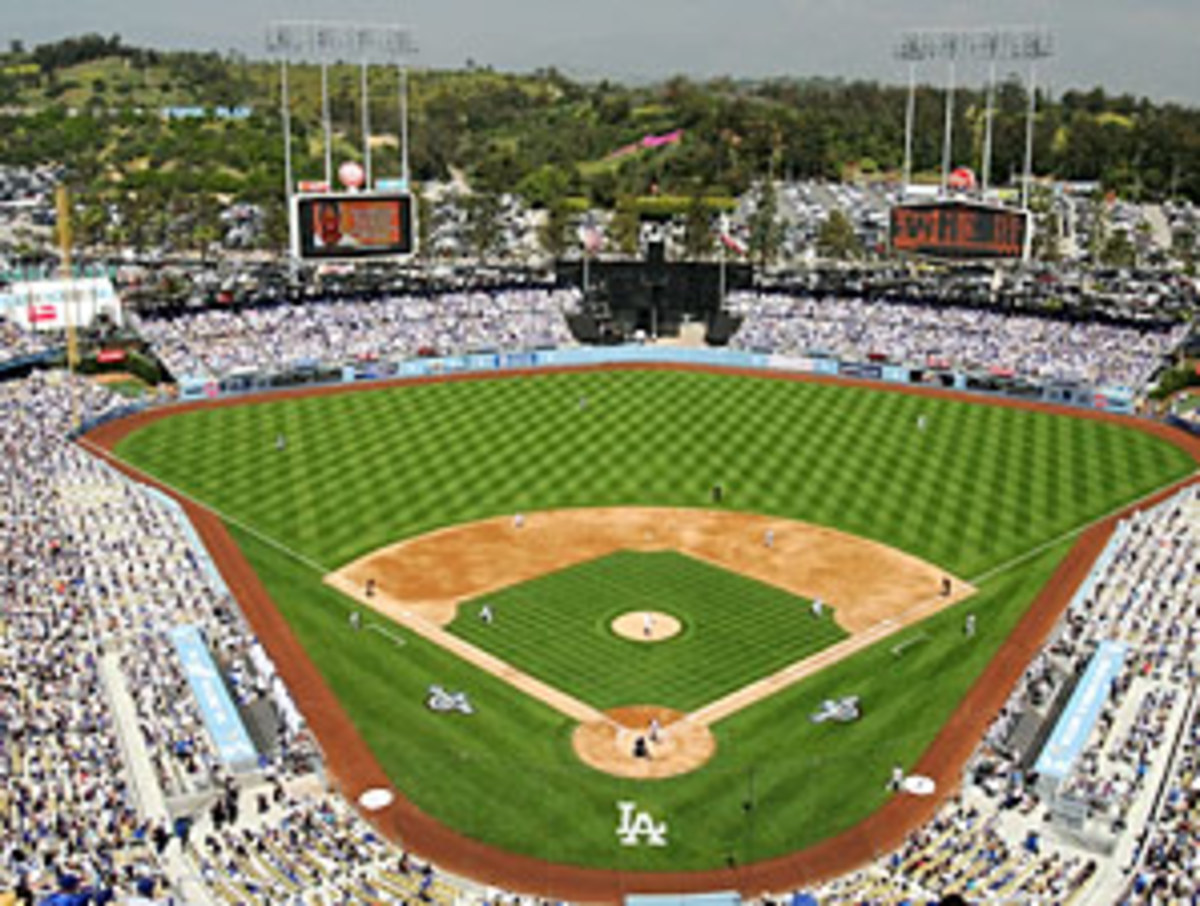A Bay Area dweller discovers Dodger heaven


As one who lives within the gravitational pull of the San Francisco Giants, I know I commit blasphemy by praising anything Dodger. But the first time I set foot in Dodger Stadium, just two Aprils ago, I felt giddy, expectant -- as though I had just pushed through the turnstile into that other mid-century southern California landmark, Disneyland. It's hard to say why I got such a happy vibe from the place. Was is the Googie roofline on the outfield pavilions that zigzagged just like the roof at my elementary school (also early '60s vintage)? Was it the other mid-century modern details, like the hexagonal scoreboard in rightfield, the leftfield videoboard with the starlite-lounge sparkles adorning the "Welcome To Dodger Stadium" message, the flying-saucer planters in the parking lot? Was it the spectacular vistas of downtown LA and the San Gabriel mountains, clearly visible through hardly-hazy skies? Was it the fact that I had arrived for a night game unburdened by extra coats and blankets, something that would be unthinkable in the fog-prone Bay Area?
It must have been all these things, because I don't recall being unusually excited about the game I was there to cover, an early-season matchup between the Dodgers and the Rockies. Indeed, the game was forgettable. But Dodger Stadium left an impression.
The place is just cool. It's old-school not because it was designed to feel that way, like, say, Camden Yards. It just is. The Dodgers got it right the first time on several counts. First, the stadium is carved out of the hillsides around Chavez Ravine so the four seating levels all seem to float without many support beams (a radical design in its time.) Thus, almost every seat has an unobstructed view. Secondly, it was privately financed, the only ballpark so funded in the 20th century after Yankee Stadium in 1923. Third, it was built just for baseball, the only major league park so built between 1961 and 1973. Many of its multi-use contemporaries have since been recognized as regrettable ideas and demolished, replaced by structures that are, well, more like Dodger Stadium.
There have been upgrades, renovations and signage additions over the years, but none that have radically altered the characteee (or, mercifully, the name) of the place. Indeed, owner Frank McCourt should be commended for largely keeping the stadium's spirit alive. After he had most of the old plastic seats, which had been around since the '70s, torn out recently, he had them replaced with new seats in the original 1962 pastel palette: sunny yellow, light orange, turquoise and sky blue. Many of the stadium's most beloved traditions survive, too, like Nancy Bea Hefley on the organ, Vin Scully on the radio, and Dodger Dogs on the grill.
The place has its faults, of course, though cracking concrete is no longer one of them. ( McCourt spent millions repairing and resurfacing the bowl's concrete.) As a journalist arriving early and leaving late, I didn't have to deal with the things fans gripe about parking and traffic and overpriced concessions, for instance. But then, unlike sportswriters, fans don't have to deal with the cramped visitors' locker room, voted the third worst in the majors in a 2003 SI poll, behind Fenway and Wrigley.
Uncomfortable digs for the visitors? Surely most Dodgers fans would see that as one more reason to treasure their 46-year-old gem.
1. McArthur Court, University of OregonShaky, funky, and bone-rattlingly loud, 81-year-old Mac Court is the best college basketball arena in the land.
2. The Old CourseThe course, literally on the 17th fairway at St. Andrews, doesn't disappoint.
3. Olympic Stadium, BarcelonaThe archer shooting the flaming arrow to light the Olympic cauldron at the 1992 Summer Games was one of the coolest things I've seen in sports.
4. Indianapolis Speedway. Another was seeing 300,000 fans stand up to cheer on Danica Patrick near the end of the 2005 Indy 500 when she became the first woman ever to lead the race.
